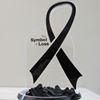Beak images as a convenient way for chick sexing
Chicken Sexing Through Beak Morphometry
Published: September 27, 2023
Source : A. IQBAL 1 and A. F. MOSS 2 / 1 University of New England, Armidale, NSW, Australia, Chungbuk National University, Cheongju, South Korea; 2 University of New England, Armidale, NSW, Australia.
Feather sexing, a relatively convenient method to separate male and female day-old broiler chicks, is no longer available especially in Australia due to a shift from slow feathering to fast feathering parent stocks (England et al., 2021). Therefore, other convenient ways for chick sexing are needed for research trials. Vent sexing is a possibility, but the time required to successfully vent sex and biosecurity restrictions of hatcheries can make this difficult. Sex may also be determined with DNA analysis of feathers, but this can be time consuming and expensive. Previous studies show that the beaks of some avian species such as finches (Herrel et al., 2010) and Turkeys (Dalton et al., 2017) show sexual dimorphism. So, we hypothesized that beaks of day-old chicks may show sexual dimorphism as well.
To test our hypothesis in a pilot study, beaks of 64 chicks were photographed from the top and the right side for a comparison using landmark (LM) based geometric morphometry technique similar to Dalton et al. (2017). Based on vent sexing of the 64 chicks, 14 were found to be males and 50 were found to be females. After discarding photos that did not meet the standards for analysis, 6 male side-view photos 8 female side view photos were chosen. Similarly, 19 female top view photos and 5 male top view photos were selected.
The selected photos were used to identify several homologous morphological features as landmarks. These landmarks were digitised using TPSdig software and coordinate data of these landmarks were further processed and subjected to canonical variate analysis (CVA) in MorphoJ software to determine the statistical significance of differences between beak landmark configurations of male and female chicks.
The analysis calculated two types of distances between the landmark configurations, a Procrustes distance (PD) and a Mahalanobis distance (MD) as a measure of the difference between the landmark configurations generated from beak photos of male and female chickens along with their associated p-values to determine statistical significance. As the assumption of isotropic variation of landmarks that underlie the Procrustes method do not hold for most biological samples (Klingenberg, 2016), we used MD for this study.
Therefore, based on Mahalanobis distance, these results show significant (P=0.0005, MD=3.0746) difference in the top view landmark configurations between male and female day-old chicks beaks and a tendency (P= 0.0583, MD=2.1014) towards significant difference using the side view configuration. This was a pilot experiment and thus required larger sample sizes and optimisation of methods to capture photos of chicks. However, these results are promising and warrant further exploration into the potential use of beak images for sexing day old broiler chickens.
Presented at the 33th Annual Australian Poultry Science Symposium 2022. For information on the next edition, click here.
Dalton HA, Wood BJ, Widowski TM, Guerin MT & Torrey S (2017). PloS One. 12: e0185159
England AD, Kheravii SK, Musigwa S, Kumar A, Daneshmand N, Sharma NK, Gharib-Naseri K & Wu SB (2021). Poult. Sci.100: 100924.
Herrel A, Soons J, Aerts P, Dirckx J, Boone M, Jacobs P, Adriaens D, Podos J (2010). Emu - Austral Ornithology. 110: 39-47.
Content from the event:
Related topics:
Mentioned in this news release:

Recommend
Comment
Share

Would you like to discuss another topic? Create a new post to engage with experts in the community.















